The Cobble Hill 10k, which took place on January 26, was the second event that’s part of the VIRA Island Race Series.
As I had mentioned in the Cobble Hill 10k race preview, there was a slight change to the location of the start and finish line.
I also recall saying that I welcomed that change because the time between finishing the race and getting to line up for the post-race food was greatly reduced.
When I woke up on race morning, I was extremely grateful for the wonderful weather we got. Considering that a couple of weeks ago, the vast majority of Southern Vancouver Island was shut down due to snow, I was stoked that I would be able to race in a tank top and short shorts.
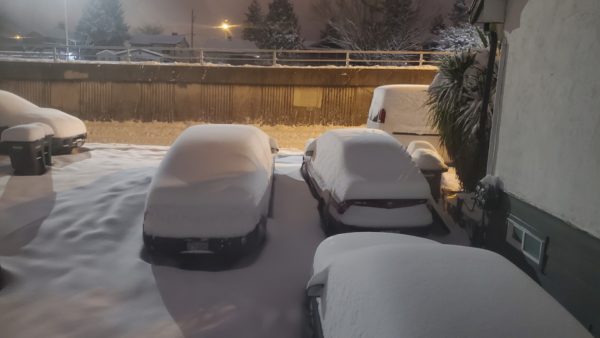
Above: What it looked like outside less than 2 weeks before the Cobble Hill 10k.
I mean where else in Canada can I run a race in a tank top and short shorts at the end of January?
I arrived on race morning at George Bonner Elementary School and the parking was extremely well-organized and so was the package pickup. After picking up my bib, I socialized with a few of my running friends and clients.
The night before the race, I decided that I was going to liberate myself again. When I say “liberate”, I mean embrace the freedom of running without a GPS watch. A couple of my coworkers asked me what I think I’m capable of running in Cobble Hill and I said, “I believe, given that it’s January and I haven’t trained as much, I can run between 43-44 minutes”.
There I was, at the start line, ready to start without my watch. When the gun went off, I started borderline “too slow”. My first km felt like a 5 minute km, which is approximately 45 seconds slower than my usual starting pace. With that in mind, the first km felt easy and I felt relaxed.
Once I got past the first km, I knew that I started at the right pace for my current fitness level. I picked it up a bit for the second km. Once I got to a slightly faster speed that I was still comfortable with, my goal was not to slow down for the remainder of the race.
After the 2nd km, my strategy was to run with the person or people who are slightly in front of me. If they slowed down, I would keep going at my own pace until I catch up to a new group. If they sped up, I gave myself the option to speed up to stay with them. I was happy to have a pretty good group to run with. The one thing I was not going to let myself do this whole race was slow down.
I picked it up again very slightly after the 6km mark.
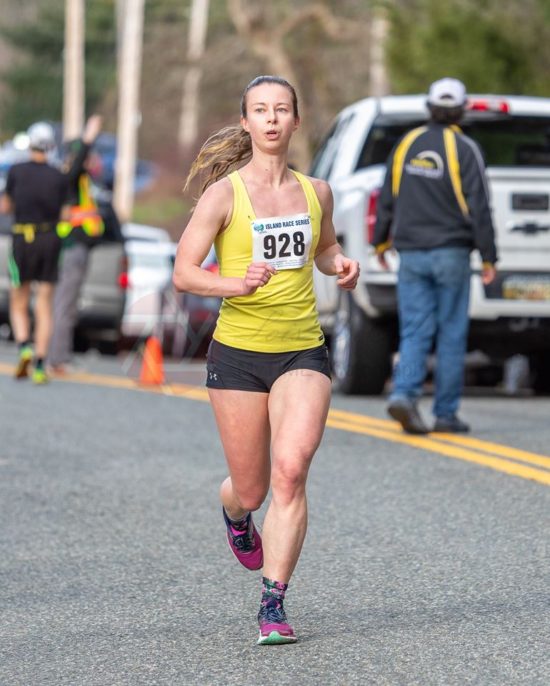
Above: I can see a bit of rotation through the torso, which is creating some inefficiencies in my running. This is why I love race photos. I can really take a closer look at form. And hey, don’t I have cool socks? Photo by Lois DeEll.
By the time I got to km 9, I was still feeling good. Shortly thereafter, I realized I was about 500m from the finish line and I could hear it.
As I took the last corner, I heard someone yell to the female runner in front of me, “You’re at 42 minutes, let’s go!” To be honest, I was happy to hear that I was less than half a km away from the finish with 42 minutes on the clock. At first, I felt like I was going slower than that.
I picked it up a little bit in the last 200m.
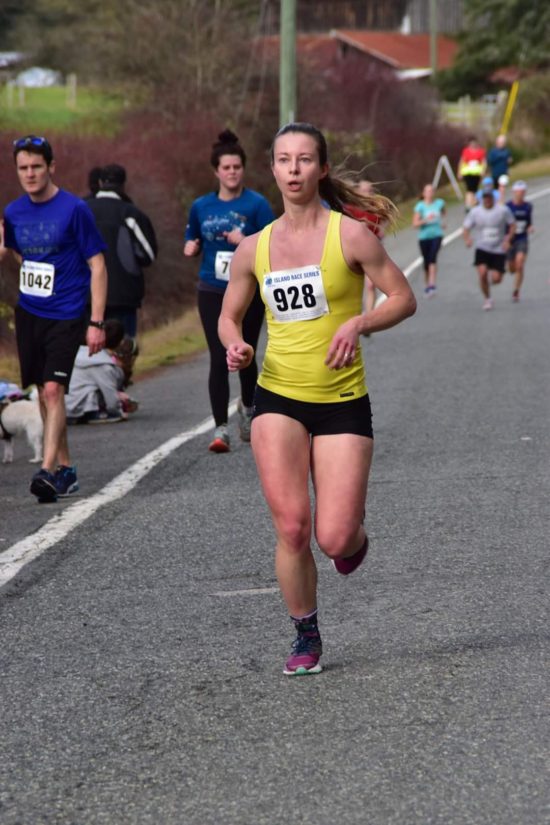
Above: Approaching the finish at the Cobble Hill 10k. The hip drop and the shoulder position definitely needs some work. Photo by Joseph Camilleri.
Ultimately, I finished the Cobble Hill 10k at a faster pace per km than the Harriers Pioneer 8k two weeks ago (by 4 seconds per km to be exact). My final chip time was 43:53, which was good enough for 2nd place in my age group and 17th (out of 259 women overall). I definitely have a lot of work to do before I can get my 10k time under 40 minutes.
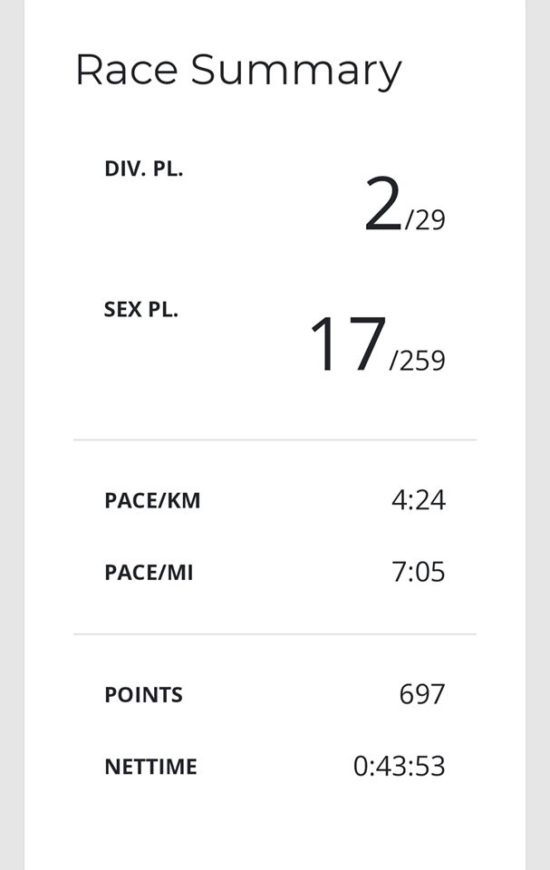
Above: A screenshot of my Cobble Hill 10k results on RaceDay Timing.
I also want to congratulate my run coaching client Howard on his NEW PERSONAL BEST at the Cobble Hill 10k and a 7th place age group finish! So far, he got a personal best in both of the VIRA Island Race Series he has done. I look forward to seeing what he will accomplish next. 🙂
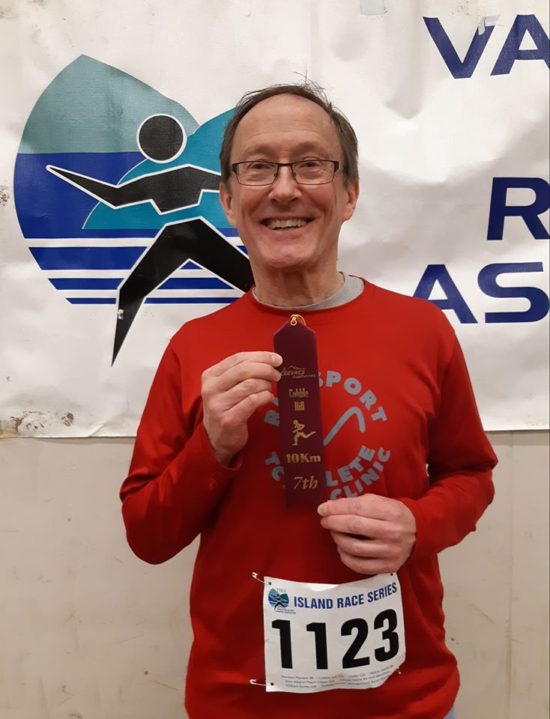
Above: My run coaching client Howard posing with his Age Group Award and smiling about his personal best at the Cobble Hill 10k.
Top 3 Key Takeaways from my Cobble Hill 10k 2020 Experience:
1. Starting slower really works.
Every time I run the first km too fast, I pay for it by the time I get to the 4th km. Any time that I may have banked by running the first km very fast ended up getting used up by the time I got halfway through the race. After that, I just got progressively slower.
At the Cobble Hill 10k, when I started slower, I was able to pick up the pace later because I didn’t burn myself out in the first km.
2. Ditch that Garmin for the rest of the VIRA Island Race Series.
Running without my Garmin is liberating. I can focus on moving forward as opposed to doing math in my head as I try to predict my finish time based on the pace my Garmin tells me I’m at. I don’t need to stare at my wrist until my neck gets sore. When I don’t wear my watch, I can position my head in a way that allows me to run more efficiently.
3. I have a lot of work to do before I can break 40 minutes in the 10k but I cannot beat myself up over my time.
You shouldn’t beat yourself up over your pace either. It’s still very early in the season and many of us have not been running as much between October and January. Ideally, if your goal is to peak for the Island Race Series, then you should be running your base miles in August, September and October. Then, progressively add tempos, hills and speedwork in November and December. I haven’t done much running since the end of September and I’m brutally honest about that, so I won’t be complaining about running slower than I used to.
To break 40 minutes in the 10k, I need to increase my weekly mileage while staying injury-free, do hills and speedwork as well as improve my overall technique. This means I need to minimize the rotation through the upper body, as well as increase my core and gluteus medius strength. I also need to work on landing with my foot directly underneath or slightly behind my hips to improve running efficiency.
So, what’s next?
Next up is the Cedar 12k on February 9th, which is the third race of the series. Stay tuned for my race preview and I look forward to seeing you there.
Thanks Yana for mentioning me in this blog! Having you as trainer/coach is an awesome way to help get to my goals. Your running and fitness knowledge, positive spirit and encouragement really work!!